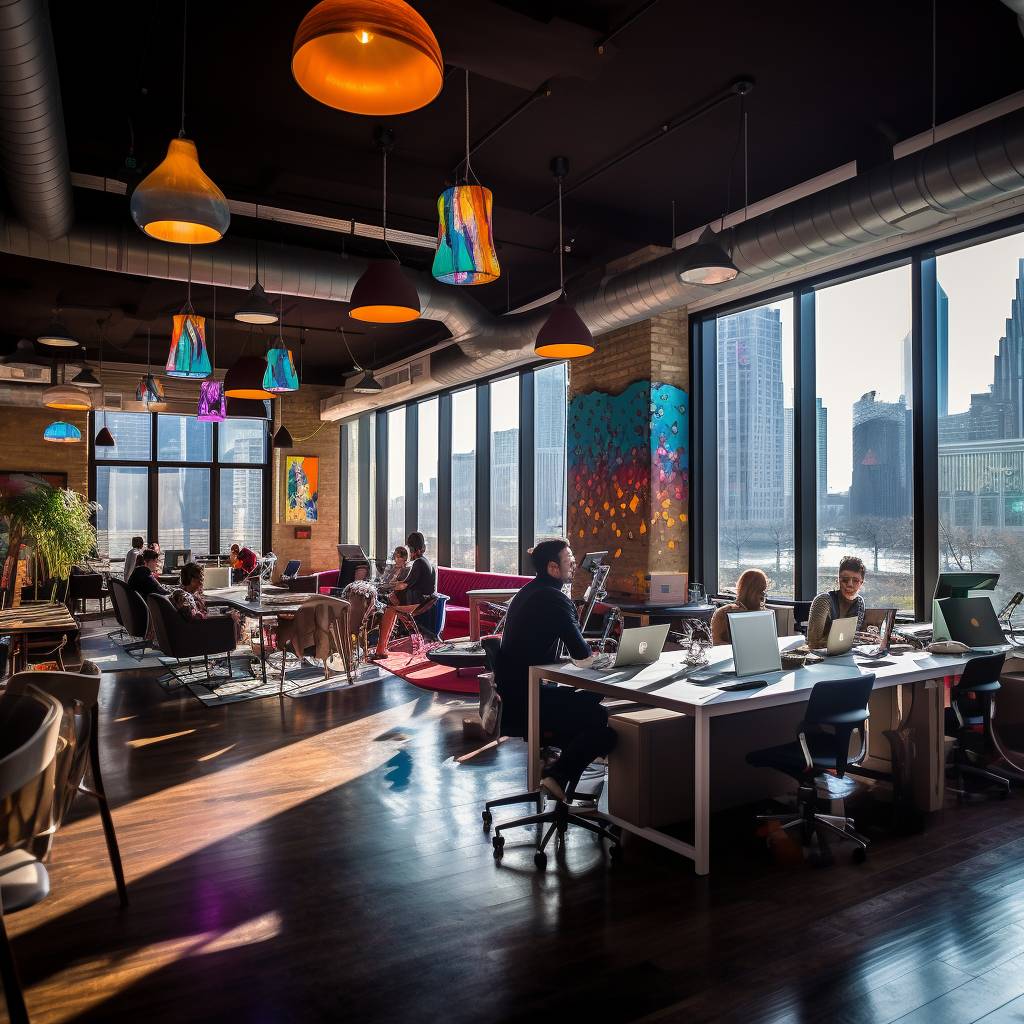
Co-Working Spaces Surge in Chicago Amidst Downtown Office Vacancies
As the pandemic continues to redefine the office landscape, Chicago is experiencing a surge in co-working spaces, offering a unique blend of convenience and community to a workforce that is increasingly embracing hybrid work models. Amid record high office vacancies and a growing reluctance to return to traditional office environments, co-working spaces are flourishing in the Windy City, appearing in locations as diverse as suburban shopping centers, apartment buildings and even upscale health clubs.
In the wake of COVID-19, the concept of co-working has evolved from its pre-pandemic image of trendy urban spaces, popularized by the likes of WeWork, into a more flexible and accessible option for both employers and employees. As Mark Dixon, CEO of IWG, the world’s largest provider of co-working space, explains, “We’re converting empty shops, warehouses, office buildings and apartment blocks. For us, it’s a period of super-high growth.”
Co-working spaces are not just about providing a physical location for work. They offer a range of amenities like copiers, coffee machines, conference rooms, free Wi-Fi and even the best sit stand desks. These facilities offer remote workers an escape from home distractions while maintaining the convenience of working close to home.
Interestingly, this shift towards co-working is not confined to downtown Chicago. IWG is opening more centers in the suburbs, reflecting the realization that not everyone needs to be in a centralized location. This trend is backed by data from CoworkingCafe, which reveals that there were 6,163 co-working spaces across the U.S. at the end of June, marking a 10% increase over the first quarter.
Chicago ranks fourth in the U.S. with 234 co-working spaces totaling 6.29 million square feet. This growth comes even as the city’s office market continues to struggle with high vacancy rates and an increasing inventory of subleases.
Beyond their geographic expansion, co-working spaces are also popping up in unusual places like health clubs, apartment complexes and retailers. This diversification reflects the demand for more flexible and convenient work environments.
A prime example is Life Time, a national fitness chain that opened a co-working space adjacent to its new athletic club at One Chicago residential tower in River North. There are now more than a dozen Life Time Work locations across the U.S., tapping into an apparent demand to co-work where you work out.
Another innovative example is BIAN, a high-end private wellness club located on the ground floor at 600 W. Chicago Ave. Initially launched as a wellness club offering yoga classes and spa services, BIAN has now added a 9,000-square-foot co-working space for its members.
BIAN’s co-working space offers members access to conference rooms equipped with video screens, a lounge area, private meeting rooms and even an electric height adjustable standing desk. This combination of wellness and work facilities provides a unique working environment that also fosters community – an aspect that many remote workers miss in their home offices.
As co-working spaces continue to evolve and diversify, they are emerging as a powerful solution to the challenges posed by the pandemic. Offering flexibility, convenience and community, these spaces are redefining the concept of work and paving the way for a new era of hybrid working.





